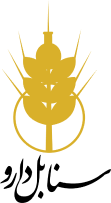کاروتنوئیدهای زعفران افسردگی و اضطراب ناشی از UCMS را در موشها معکوس کردند: نشانگرهای سیگنال دهی زیر واحد گیرنده BDNF/ERK/CREB و NMDA رفتاری، بیوشیمیایی و هیپوکامپ
Sahar Mohammadi, Mohsen Naseri, Nassim Faridi, Parisa Zareie, Leila Zare, Javad Mirnajafi-Zadeh, S. Zahra Bathaie
چکیده:
زمینه: افسردگی یک وضعیت ناتوان کننده است که بر ذهن و بدن فرد تأثیر می گذارد. اثرات بهبود دهنده زعفران بر افسردگی و اضطراب مدتهاست که با اطلاعات محدود در مورد مکانیسم اثر مولکولی مورد بحث قرار گرفته است.
فرضیه/هدف: بررسی تأثیر کاروتنوئیدهای زعفران، کروسین و کروستین بر افسردگی و اضطراب در موشهای صحرایی با تأکید بر برخی مسیرهای سیگنال دهی درگیر.
طراحی مطالعه: افسردگی و اضطراب از طریق استرس مزمن غیرقابل پیش بینی خفیف (UCMS) در موش ها القا شد. سپس گروههای مختلف موش با کروسین، کروستین، فلوکستین و وسیلهای تحت درمان قرار گرفتند. تست های رفتاری قبل و بعد از درمان انجام شد.
مواد و روش ها: سروتونین و کورتیکوسترون سرم و بیان برخی از پروتئین های سیگنال دهی هیپوکامپ مورد مطالعه قرار گرفت. علاوه بر این، ابزارهای بیوانفورماتیک برای پیشبینی برهمکنشهای کروسین/ کروستین با ناقل سروتونین و زیرواحد گیرنده NMDA NR2B استفاده شد. سپس از پچ گیره برای مطالعه برهمکنش کروستین با گیرنده NMDA استفاده شد.
نتایج: تست های رفتاری مختلف القای افسردگی و بهبود افسردگی توسط این کاروتنوئیدهای طبیعی را تایید کردند. علاوه بر این، کروسین/ کروستین به طور قابل توجهی باعث کاهش سروتونین سرم و کاهش کورتیکوسترون سرم در گروه های افسرده شد. آنها همچنین باعث افزایش یا افزایش بیان CREB، ERK، BAD، BDNF، p11، و 5-HT1B در هیپوکامپ گروههای افسرده شدند. علاوه بر این، نسبتهای p-CREB/CREB، p-ERK1/2 /ERK1/2، و p-BAD/BAD در گروههای افسرده تحت درمان با کروسین/کروستین افزایش یا روندی داشت. با این حال، بیان NR2B و FOXO3a روند کاهشی را در گروههای افسرده پس از درمان نشان داد. دادههای بیوانفورماتیک نشان داد که کروسین/ کروستین میتواند به ناقل سروتونین (SLC6A4) و زیر واحد NR2B گیرنده NMDA متصل شود. هر دو کاروتنوئید به همان محل فلوکستین در SLC6A4 متصل می شوند. با این حال، آنها به سایت های مختلف در NR2B متصل می شوند. بنابراین، کروستین در همان محل ایفن پرودیل به NR2B متصل می شود. اما کروسین به سایت دیگری متصل شد. ثبت پچ گیره کل سلولی روی هیپوکامپ موش طبیعی کاهش قابل توجهی در دامنه پیک NMDA پس از درمان با کروستین نشان داد که نشان دهنده اثر مهاری آن بر این گیرنده است.
نتیجه گیری: فعالیت های ضد افسردگی کروسین/ کروستین احتمالاً به دلیل تأثیر آنها بر غلظت سرمی سروتونین و کورتیکوسترون، بیان NR2B و مسیرهای سیگنال دهی پایین دست است. علاوه بر این، این کاروتنوئیدهای طبیعی، مانند فلوکستین، باعث افزایش تمایل در p11 و 5HT1B در موشهای افسرده شدند.
Abstract:
Background: Depression is a debilitating condition that affects the mind and the individual’s body. The improving effects of saffron on depression and anxiety have long been discussed, with limited information about the molecular mechanism of action.
Hypothesis/Purpose: Investigating the effect of saffron carotenoids, Crocin and Crocetin, on depression and anxiety in rats by emphasizing some signaling pathways involved.
Study Design: Depression and anxiety were induced in rats via unpredictable chronic mild stress (UCMS). Then different rat groups were treated with Crocin, Crocetin, Fluoxetine, and vehicle. Behavioral tests were done before and after treatment.
Methods: The serum Serotonin and Corticosterone and the expression of some hippocampal signaling proteins were studied. Furthermore, bioinformatics tools were used to predict the interactions of Crocin/ Crocetin with the Serotonin transporter and NMDA receptor subunit NR2B. Then, the patch-clamp was used to study the interaction of Crocetin with the NMDA receptor.
Results: Various behavioral tests confirmed the induction of depression and the improvement of depression by these natural Carotenoids. In addition, Crocin/ Crocetin significantly increased the decreased serum Serotonin and reduced the increased serum Corticosterone in the depressed groups. They also increased or caused a trend of increase in the CREB, ERK, BAD, BDNF, p11, and 5-HT1B expression in the hippocampus of the depressed groups. In addition, there were an increase or a trend in p-CREB/CREB, p-ERK1/2 /ERK1/2, and p-BAD/BAD ratios in the Crocin/ Crocetin treated depressed groups. However, the NR2B and FOXO3a expression showed a trend of decrease in depressed groups after treatment. The bioinformatics data indicated that Crocin/ Crocetin could bind to the Serotonin transporter (SLC6A4) and NR2B subunit of the NMDA receptor. Both carotenoids bind to the same site as Fluoxetine in the SLC6A4. However, they bound to different sites on the NR2B. So, Crocetin binds to NR2B at the same site as Ifenprodil. But Crocin bound to another site. The whole cell patch-clamp recording on the normal rat hippocampus revealed a significant decrease in the NMDA peak amplitude after Crocetin treatment, indicating its inhibitory effect on this receptor.
Conclusion: The antidepressant of Crocin/ Crocetin are possibly due to their effects on Serotonin and Corticosterone serum concentrations, NR2B expression, and the downstream signaling pathways. Furthermore, these natural carotenoids, like Fluoxetine, induced an increasing tendency in p11 and 5HT1B in depressed rats.


